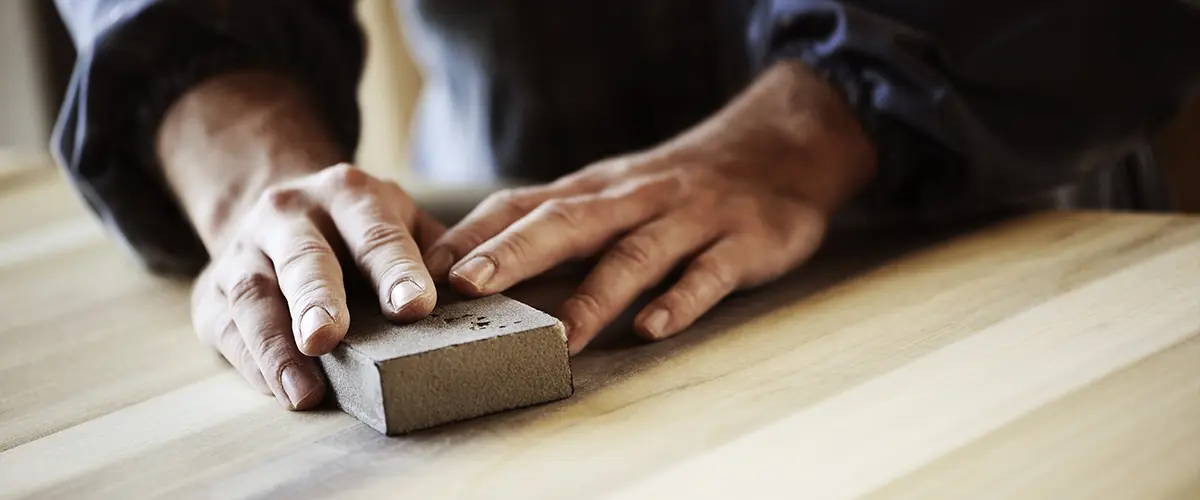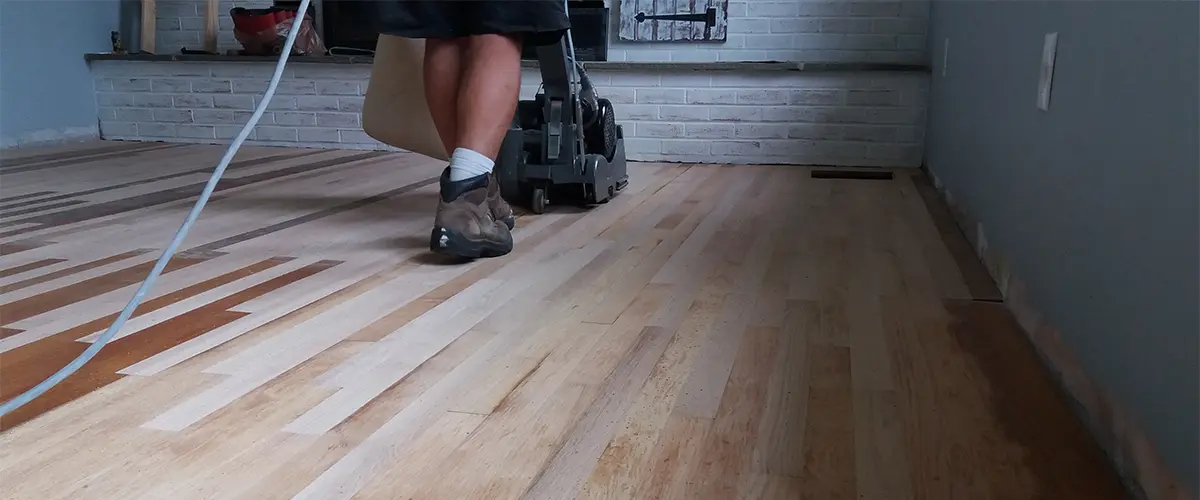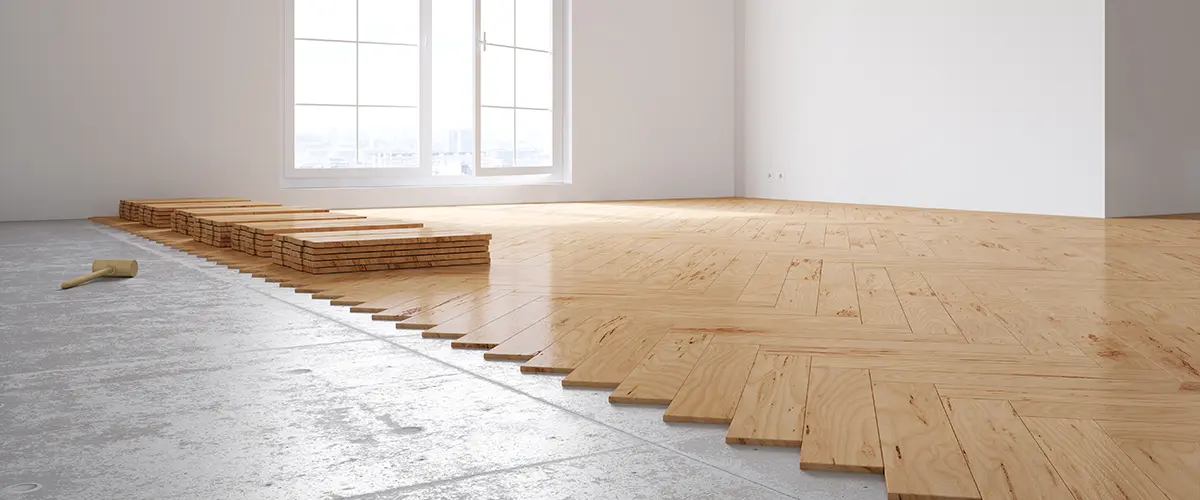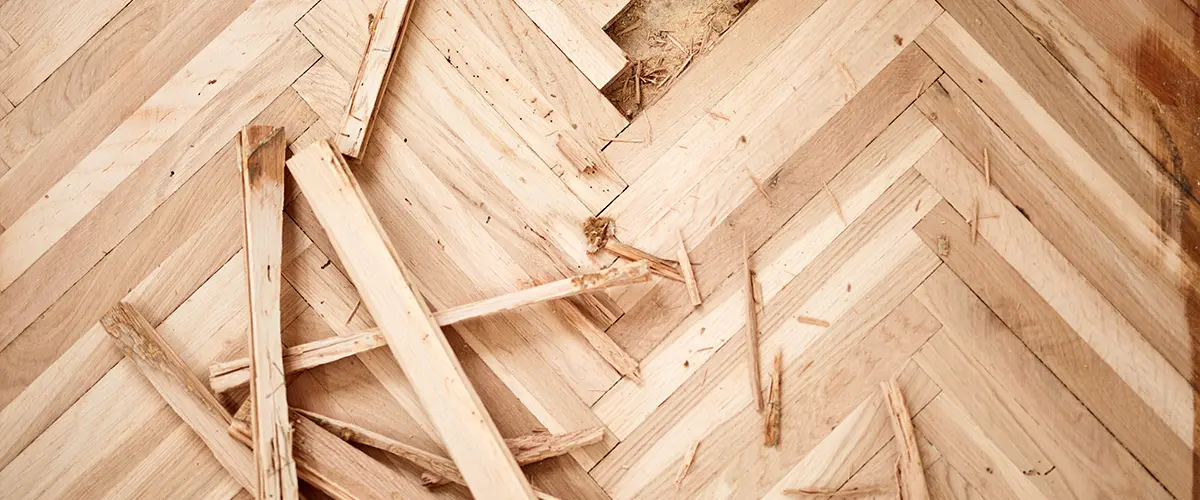When it comes to your hardwood floors, you may be wondering whether to resurface them or refinish them.
While both options have their pros and cons, it can still be tough to decide which is the best option for your aged hardwood floors and your specific situation.
In this blog post, we’ll take a closer look at the essential differences between resurfacing vs refinishing wood floors, so that you can make an informed decision about what’s best for your home.
Let’s begin!

What Are Hardwood Floors
Hardwood floors are a popular choice for flooring in homes because they add a touch of class and elegance. They are also a very practical choice because they are durable and easy to maintain.
There are different types of hardwood floors, such as oak, cherry, and maple. Each type of hardwood has its own unique appearance and characteristics.
Hardwood floors can last for many years, but they will eventually start to show signs of wear and tear. When this happens, you will need to decide whether to resurface or refinish your floors.
Here at Randy Stewart Hardwood Flooring we’re the only flooring contractor certified by the NWFA. We’re proud of our craftsmanship and our goal is to bring it to your doorstep.
What Is Floor Refinishing?
Refinishing hardwood floors is a process that involves sanding down the existing floor to remove the old finish. Once the floor is sanded, a new finish is applied.
The entire process can take several days to complete and will require the use of special equipment.
What's The Refinishing Process
- Sandpaper
- Finishing products, such as a sealer, stain, or varnish
- A sanding machine
- Protective gear, such as goggles and a mask
- Wood grinding equipment
- Wood planks for replacements
The first step in refinishing your floors is to sand them down. This will remove the old finish and any dirt or debris that has built up over time.
Next, you will need to apply a new finish to the floors. You can choose from a variety of finishes, such as a sealer, stain, or varnish.
Finally, you will need to use a sanding machine to buff the floors and give them a smooth, polished look.
The entire process can take several days to complete, so it’s important to be patient and take your time. It is also important to note that refinishing can only be done on floors that are in good condition. If your floors are severely damaged, then you will need to resurface them instead.

What Is Floor Resurfacing?
Resurfacing hardwood floors is a process that involves completely removing the old floor and installing a new one. This option is usually only chosen when the floors are too damaged to be repaired with refinishing.
Resurfacing is a much more invasive process than refinishing and will require the help of a professional.
What's The Resurfacing Process
If you decide to resurface your wood floors, you will need to remove the old flooring completely. This can be done by removing the boards or by sanding down the existing floor.
Once the old flooring is removed, you will need to install new flooring. This can be done by either laying down new boards or by installing a new hardwood floor.
The entire process can take several days to complete, so it’s important to be patient and take your time. It is also important to note that resurfacing can only be done on floors that are in bad condition. If your floors are only mildly damaged, then you can refinish them instead.

Difference Between Refinishing vs Resurfacing
Hardwood floor resurfacing essentially means sanding down the existing wood floor to bare wood and then applying a new finish. This is a good option if your floors are in generally good condition but just need a fresh update.
Refinishing, on the other hand, involves sanding the floors down to bare wood and then restaining and/or re-sealing them. This is a good option if your floors are significantly damaged or have started to show their age.
One of the biggest differences between resurfacing and refinishing hardwood floors is the amount of time and effort involved. Resurfacing is generally a much quicker and easier process than refinishing, so it can be a good option if you’re looking for a faster update.
However, it’s important to note that resurfacing will only work if your floors are in generally good condition – if they’re heavily damaged, you’ll need to opt for refinishing instead.
Cost Difference
Another key difference between these two options is the cost.
Refinishing hardwood floors is typically a much more affordable option than resurfacing, so it can be a good choice if you’re working with a tight budget. However, it’s important to keep in mind that the final cost will depend on the size of your floors and the type of finish you choose.
Besides these factors, consider the cost to take out your existing floor as well.

Conclusion
All in all, both refinishing and resurfacing are great options to revamp your wood floors. It all depends on the state of your flooring and what you’re expecting to get out of your home improvement project.
As a rule of thumb, we recommend refinishing wood floors when their color is faded and the wood grain is starting to show wear and tear. Resurfacing is required only when your floors are cracked, split, dented, and so on. In short, if the damage is irreparable, you’ll have to resurface it.
In any case, if you’re looking for the best solution for your wood floors, get in touch with our experts from Randy Stewart Hardwood Flooring. We offer professional wood floor installation, refinishing, and resurfacing.
Call us today to discuss your upcoming project or request a quote and we’ll get back to you as soon as possible.
